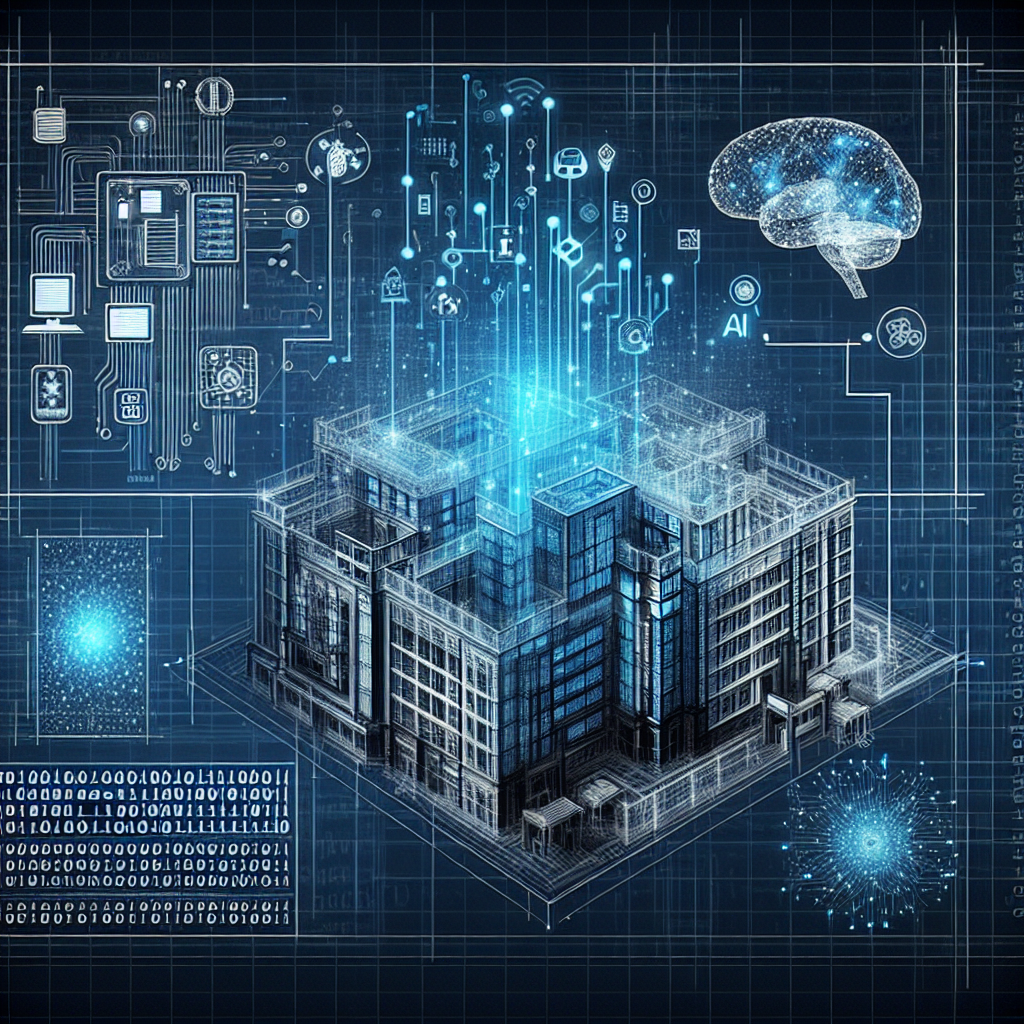As technology continues to advance and evolve, the construction industry is no exception. Building Information Modeling (BIM) has become a standard practice in the industry, allowing architects, engineers, and construction professionals to create detailed digital representations of buildings and infrastructure. This technology has revolutionized the way projects are designed, constructed, and managed.
Now, with the integration of Artificial Intelligence (AI) into BIM, the industry is poised for even more significant advancements. AI has the potential to enhance the capabilities of BIM by providing valuable insights, optimizing processes, and improving decision-making. In this article, we will explore the benefits of integrating AI into BIM and how it is transforming the construction industry.
Benefits of Integrating AI into BIM:
1. Enhanced Design Capabilities: AI algorithms can analyze vast amounts of data to generate design options based on specific parameters and constraints. This can help architects and engineers explore more innovative and efficient design solutions.
2. Improved Project Planning: AI can analyze historical data and project requirements to predict potential risks and optimize project schedules. This can help construction teams identify potential issues before they arise and make informed decisions to mitigate them.
3. Increased Efficiency: AI can automate repetitive tasks such as quantity takeoffs, clash detection, and cost estimation, saving time and reducing human error. This allows construction professionals to focus on more strategic aspects of the project.
4. Better Decision-Making: AI can analyze complex data sets to provide insights and recommendations for decision-making. This can help project stakeholders make informed choices that lead to better outcomes.
5. Enhanced Collaboration: AI-powered BIM platforms can facilitate real-time collaboration among project team members, enabling seamless communication and coordination throughout the project lifecycle.
6. Sustainable Design: AI can analyze environmental data and performance metrics to optimize building designs for energy efficiency and sustainability. This can help reduce the environmental impact of construction projects.
7. Predictive Maintenance: AI can analyze building data to predict maintenance needs and optimize facility management. This can help reduce downtime and increase the lifespan of building systems.
Challenges of Integrating AI into BIM:
While the integration of AI into BIM offers numerous benefits, there are also some challenges that need to be addressed:
1. Data Quality: AI algorithms require high-quality data to provide accurate insights. Ensuring that data is clean, consistent, and up-to-date can be a challenge for construction projects.
2. Skill Gap: Implementing AI technologies requires specialized skills and expertise. Construction professionals may need training to effectively utilize AI-powered BIM tools.
3. Integration Complexity: Integrating AI into existing BIM platforms can be complex and require significant investment in technology infrastructure.
4. Privacy and Security: AI algorithms rely on data, which raises concerns about privacy and security. Construction companies must implement robust data protection measures to safeguard sensitive information.
FAQs:
1. What is the role of AI in BIM?
AI plays a crucial role in BIM by enhancing design capabilities, improving project planning, increasing efficiency, facilitating collaboration, and enabling predictive maintenance. AI algorithms analyze data to provide valuable insights and recommendations for construction projects.
2. How can AI improve project planning in construction?
AI can analyze historical data and project requirements to predict potential risks, optimize project schedules, and provide recommendations for decision-making. This can help construction teams make informed choices that lead to better project outcomes.
3. What are the challenges of integrating AI into BIM?
Challenges of integrating AI into BIM include data quality issues, skill gaps, integration complexity, and concerns about privacy and security. Construction companies must address these challenges to successfully implement AI-powered BIM tools.
4. How can construction professionals benefit from AI-powered BIM tools?
Construction professionals can benefit from AI-powered BIM tools by enhancing design capabilities, improving project planning, increasing efficiency, facilitating collaboration, and enabling predictive maintenance. AI technologies can help streamline construction processes and improve project outcomes.
In conclusion, integrating AI into BIM has the potential to revolutionize the construction industry by enhancing design capabilities, improving project planning, increasing efficiency, and enabling predictive maintenance. While there are challenges to overcome, the benefits of AI-powered BIM tools are clear. Construction professionals who embrace this technology will be better equipped to meet the demands of the modern built environment and deliver successful projects.

